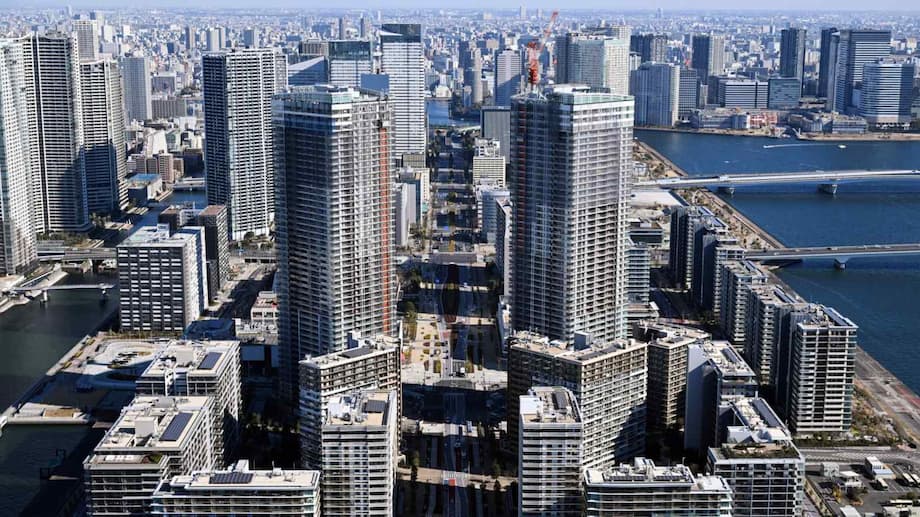City living costs climb as budgets strain
Apartment rents in Tokyo and other large Japanese cities are climbing at the fastest pace in decades, and a growing share of renters now spend more than 30 percent of their income on housing. That threshold is a common benchmark for affordability used by researchers and housing agencies. Families are returning to city centers after the pandemic, bidding up scarce units in convenient neighborhoods and squeezing monthly budgets. The result is a tight rental market that is making it harder to save for a future home purchase, cover education costs, or keep up with rising day to day expenses.
- City living costs climb as budgets strain
- How fast are Tokyo rents rising
- Why demand is returning to the core
- What is pushing up costs on the supply side
- Short term rentals and tourism pressures
- What rising rent shares mean for households
- Policy choices under debate
- What tenants can do now
- What comes next for renters and landlords
- Key Points
Rising rents sit within a broader shift in the urban economy. Employers have revived office attendance, tourist flows are back near record levels, and the appeal of short commutes, better schools, and dense transit networks has pulled many households back toward central wards. At the same time, construction and financing costs are higher than they were a few years ago. Condominium prices have surged to records, which keeps more would be buyers in the rental pool. The pressure is most visible in Tokyo’s 23 wards, but Osaka, Nagoya, and Fukuoka show similar patterns.
The affordability crunch is not a single cause story. Supply constraints, higher operating costs for landlords, changing household preferences, and a shift toward smaller average unit sizes all play a role. Research on how rail station access shapes value helps explain why competition intensifies around urban hubs. Policy choices will influence how quickly the market can add homes and how evenly the burden is shared between tenants and owners.
How fast are Tokyo rents rising
Recent figures point to the fastest rise in decades
Official price data show a clear inflection. In March, the consumer price index for private sector rents in Tokyo’s 23 wards rose 1.1 percent year on year, the fastest pace since October 1994. Nationwide rent components have risen for many months in a row. On the ground, rent listings reflect these pressures. Around the University of Tokyo’s Hongo campus, typical studio asking rents hover near ¥140,000 a month, up ¥10,000 to ¥20,000 compared with five years ago, according to local market trackers reported by The Japan News. Economists warn that because rent is a large and inflexible expense, even modest increases can dampen other spending. That concern is growing as food, energy, and services prices remain elevated. See: The Japan News coverage.
Family sized units are leading the surge
Price pressure is not uniform across the market. Over the past five years, asking rents for smaller apartments in Tokyo’s 23 wards rose about 7.6 percent, while family sized dwellings climbed roughly 26.1 percent. Households seeking more space near schools or childcare often focus on the same neighborhoods, which compresses available supply and accelerates rent growth in those segments. Similar patterns are visible in Osaka and other large metros, where central neighborhoods with strong transit links and amenities command an expanding premium.
Why demand is returning to the core
Commuting convenience remains the most valuable feature of urban housing in Japan. Central wards offer dense rail networks, shorter travel times, and more job options. A study of Tokyo’s rental market found that the proximity and clustering of train and subway stations have a measurable effect on rent levels. The premium is not just about distance to the nearest station. The rank order of nearby stations also matters, which means a home near several stations with different lines and service patterns tends to command higher rent. This helps explain why neighborhoods where multiple lines intersect see faster price gains when demand rebounds. See: ScienceDirect research on station clustering.
Quality of life factors reinforce this pull. City centers concentrate childcare options, after school programs, health services, and cultural amenities. For households balancing work and school schedules, the time savings of an address near a station can outweigh a smaller floor plan. The return of tourism has also revived service sector jobs that cluster in central districts. As more households prioritize access and time, the map of demand tilts toward those areas.
What is pushing up costs on the supply side
Supply is tight and getting more expensive to add. Builders face higher material and labor costs, and financing has become less favorable as interest rates move up from historic lows. Landlords report higher refurbishment and utility costs. When operating expenses climb, owners often seek higher rents at lease renewal to maintain returns. Major real estate companies have begun notifying tenants of upcoming increases, and industry surveys suggest most households accept adjustments when framed against general cost pressures.
Condominium prices have set new records, which keeps would be buyers renting longer. The average price of newly built apartments in the Tokyo metropolitan region recently reached about ¥81.35 million, and units in the 23 wards averaged roughly ¥116.32 million, according to market data cited by The Japan News. As purchase budgets fall short, more households remain in rentals, which adds demand to a limited pool of available units. The pipeline of new rental buildings has not been large enough to offset that shift.
Short term rentals and tourism pressures
Short term rentals have reshaped parts of the market, especially in tourist heavy districts. A peer reviewed study of Tokyo and Osaka finds that short term rental activity can create a rent gap that draws units away from long term tenants. Japan’s Private Lodging Business Act, which took effect in 2018, set limits on operating days and required management oversight, and many municipalities added ordinances to reduce neighborhood frictions. Even with these checks, researchers observed that Osaka saw a larger immediate impact because more landlords shifted vacant or low rent units into tourist rentals. Tokyo’s risk is more future oriented. If long term revenues weaken in certain districts or if tourism grows faster than regulation adapts, more owners could convert units to short term use. See: Wiley study on short term rentals.
The study highlights two useful ideas. A closed rent gap measures current pressure from short term rentals on long term supply. An open rent gap captures future risk where conversion might become attractive. In Tokyo, the open gap appears larger in areas with strong tourist appeal and limited vacant housing. That suggests the need for tailored local rules, consistent enforcement, and better data sharing so that housing planners can anticipate where conversion pressure may rise.
What rising rent shares mean for households
The 30 percent share is a blunt tool, yet it offers a quick way to see stress. When rent crosses that line, households tend to cut back on restaurants, travel, clothing, and some health spending. Savings for a down payment slow. Families with children face difficult trade offs around daycare, cram school, and activities. Older renters may trim maintenance or delay medical visits, especially if they are also covering premiums and copays tied to health and long term care programs.
Wage dynamics complicate the picture. Japan has posted periods of wage gains, helped at times by strong seasonal bonuses, and consumer spending has seen brief upturns. Inflation remains a challenge, which limits the boost to purchasing power. That combination makes a rent increase feel larger than the headline percentage, particularly for middle income households that do not qualify for targeted subsidies. When rent is the biggest line item after taxes, even small increases can change how a family budgets for the year.
Policy choices under debate
Rent control is not a quick fix
Debates in other markets show the trade offs. In California, a ballot measure known as Proposition 33 sought to expand local authority to cap rent increases by repealing state limits from the mid 1990s. Proponents argue that tighter limits can stabilize costs for sitting tenants. Opponents warn that strict caps can reduce investment, encourage condo conversion, and shrink the long term supply of rentals. Japan’s legal framework is different, but the lesson travels. Broad caps help current tenants, while the risk is slower construction and fewer upgrades if owners cannot earn a return. Any discussion of caps must account for these effects. See: explanation of California Prop 33.
Zoning reform and supply expansion
Another route is to add homes faster where demand is strongest. Cambridge, Massachusetts, recently removed single family zoning and minimum parking mandates citywide to allow more homes on the same land. That decision aims to increase the supply of housing in established neighborhoods by reducing rules that limit unit counts. Japan’s zoning system is not identical to the American model, yet similar goals apply. Cities can encourage more mid rise apartments near major stations, allow smaller average unit sizes where appropriate, and streamline conversion of underused offices into rental housing. Local governments can also speed up approvals for student housing and family sized rentals in school districts where demand is already visible. See: City Journal on Cambridge reforms.
Regulation of short term rentals is another lever. Transparent reporting and clear rules on operating days, combined with targeted enforcement in tourist corridors, can lessen pressure on the long term rental stock. Some wards have already added stricter rules than the national baseline. Coordination across city and ward lines would help prevent a patchwork that shifts pressure from one neighborhood to the next.
What tenants can do now
Households have limited room to maneuver when leases come up for renewal, yet a few steps can soften the hit or find better value.
- Run a rent to income check. Keep the rent share as close to 30 percent as possible. If it climbs, adjust other fixed costs before cutting essentials.
- Negotiate at renewal. If the building has vacancies or a nearby comparable is cheaper, bring data and ask for a smaller increase or an extra month on the current rate.
- Explore trade offs on access. Moving one or two stops farther from a major hub can lower rent while keeping commute time reasonable.
- Consider unit features that lower monthly bills. Good insulation and efficient appliances can cut electricity and gas costs.
- Time the move. The spring rush raises prices. Searching in late summer or winter can yield better terms.
- Reduce move in fees. Ask to spread or lower key money or inquire about no fee promotions in newer buildings.
- Look at managed student or corporate housing for short stays. Some offer furnished units with flexible terms that compare well to market rents once fees are included.
What comes next for renters and landlords
The drivers of rent growth in Tokyo’s core are still in place. Demand is strong in neighborhoods with dense rail access, schools, and services. Construction and operating costs remain elevated, and condo prices keep buyers in the rental pool longer. Short term rentals are better regulated than a few years ago, yet tourist demand continues to test those rules in some districts. Real wage gains would help ease the rent share for many households, although persistent inflation tempers that support.
Market outcomes will depend on how quickly more homes reach the market and how policies balance tenant protection with the need for investment. Targeted supply in station rich areas, simpler approvals for family sized units, and clear rules for short term rentals can all help. Tenants can protect their budgets by planning renewals early and weighing trade offs on space and access. Landlords that invest in energy efficiency and property upkeep can justify rents while keeping long term occupancy high. The city’s appeal is anchored in access and convenience. The aim is to restore balance so that the cost of those benefits does not crowd out the rest of household life.
Key Points
- Rents in Tokyo’s 23 wards rose 1.1 percent year on year in March, the fastest pace since 1994, and many renters now spend more than 30 percent of income on housing.
- Family sized apartments have seen the sharpest gains over five years, with increases around 26 percent versus about 8 percent for small units.
- Demand has shifted back to city centers as office attendance, tourism, and the appeal of short commutes return.
- Higher construction, financing, and operating costs, along with record condo prices, are keeping more households in rentals and limiting supply.
- Research shows proximity and clustering of rail stations significantly raise rent levels in affected neighborhoods.
- Short term rental activity increases pressure on long term housing in tourist heavy districts, despite tighter national and local rules since 2018.
- Policy options include targeted supply growth near major stations, clearer rules for short term rentals, and cautious use of rent controls due to supply risks.
- Households can negotiate renewals, adjust location trade offs, and reduce move in costs to manage rising rent shares.












